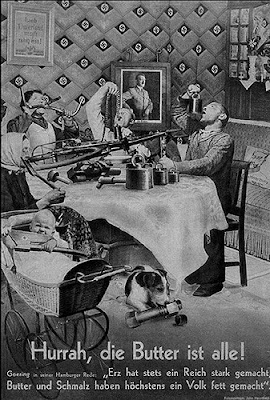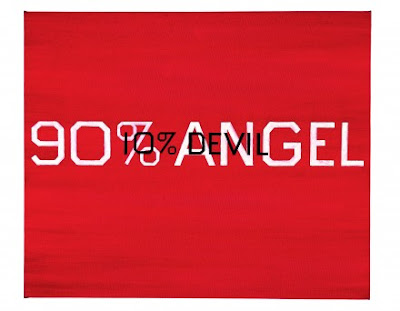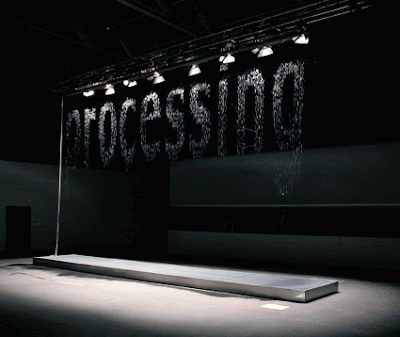IMAGE AND TEXT IN ART AND DESIGN
BEGINNINGS
CAVE PAINTINGS
CAVE PAINTINGS
'Cave paintings are paintings on cave walls and ceilings, and the term is used especially for those dating to prehistoric times. The earliest European cave paintings date to Aurignacian, some 32,000 years ago. The purpose of the paleolithic cave paintings is not known. The evidence suggests that they were not merely decorations of living areas, since the caves in which they have been found do not have signs of ongoing habitation. Also, they are often in areas of caves that are not easily accessed. Some theories hold that they may have been a way of communicating with others, while other theories ascribe them a religious or ceremonial purpose.'
CAVE OF HANDS
'Argentina'
PETROGLYPHS
'Petroglyphs (also called rock engravings) are pictogram and logogram images created by removing part of a rock surface by incising, picking, carving, and abrading. Petroglyphs are found world-wide, and are often (but not always) associated with prehistoric peoples.'
NEWSPAPER ROCK
'Canyonlands National Park, Utah'
Were these images made by shamans on drugs? Do we all psychologically carry symbols?
EGYPTIAN HIEROGLYPHS
'Egyptian Hieroglyphs were a formal writing system used by the ancient Egyptians that contained a combination of logographic and alphabetic elements. Egyptians used cursive hieroglyphs for religious literature on papyrus wood.'
EGYPTIAN HIEROGLYPHS
'black schist sarcophagus of Ankhneseferibre'
THE TAIL BITING OUROBOROS
'The Ouroboros or Uroboros is an ancient symbol depicting a serpent or dragon eating its own tail. The Ouroboros often represents self-reflexivity or cyclicality, especially in the sense of something constantly re-creating itself, the eternal return, and other things perceived as cycles that begin anew as soon as they end (compare with phoenix).'
It is the eternal circle of disintegration and re-integration.
LUCAS JENNIS
'de lapide philosophico'
THEODOROS PELECANOS
'synosius'
BOOK OF KELLS
'The Book of Kells is an illuminated manuscript Gospel book in Latin, containing the four Gospels of the New Testament together with various prefatory texts and tables.'
GOSPEL OF JOHN
'Dublin, Ireland'
Image and text / the pattern also represents letters of different shapes and sizes / strong integration between text and image / the text includes additional information that the picture cannot show.
ALBERT DURER
'portrait of Erasmus of Rotterdam'
The text is naturally incorporated into the image and gives specific information that the image cannot provide alone.
KING RENEE'S BOOK OF LOVE
Here, the text and image is starting to become quite separated.
In the past, reading and writing was reserved for monks / educated / the rich.
MUSEI WORMIANI HISTORIA
The text is integrated into the image here, but less so than in the 'Book of Kells'.
The world at home / includes information / for learning?
GUTENBERG PRINTING PRESS
The Gutenberg press / moveable type / mass production / 1454
The invention of the Gutenberg press made literature / image cheap and available to more people. The main things it printed at first were books, pamphlets, political texts and religious texts. The printing of images did not use the same quick process as text (text is fast / images are slow).
Although it is widely accepted that the Gutenberg press pioneered moveable type, Korean letter / word stamps similar to Letterpress blocks / used to print Buddhist manuscripts have been found, dating back to 1377 before the Gutenberg press was invented.
The Chinese alphabet has around 47,000 characters, compared to the Western alphabet, which has 27 - 32 characters to arrange.
LAURENCE STERNE
'the life and opinions of Tristram Shandy'
There have been many re-interpretations of 'the black page', with some interesting pieces of work shown on the 'blackpage73' blog.
1800 > 1909
Lithography / photography / mechanical reproduction
PHOTOGRAPHY
'the art or process of producing images of objects on photosensitive surfaces.'
'the art, practice, or occupation of taking and printing photographs.'
LITHOGRAPHY
'a printing process in which the image to be printed is rendered on a flat surface, as on sheet zinc or aluminium, and treated to retain ink while the nonimage areas are treated to repel ink.'
With this process, images became cheap and were more widely available to the public.
ANNA ATKINS
'unbound'
Atkins produced books containing about 100 photograms. The process of creating these images would require you to put the object on to a photosensitive surface and expose it to light / ultraviolet colour. The name of the specimen was also written on to the image.
CLAUDE F HANKINS
'murder'
The photograph became a way of 'fixing' an image. You could reproduce a photograph in print / newspapers, where they would use half-tone plates.
PAUL GAUGUIN
'where do we come from? what are we? where are we going?'
Lots of Gauguin's paintings include text / the title is often written or inscribed into the background, sometimes seemingly slipping off the canvas. The viewer sees the text as signs / symbols / words to be read to better their understanding of the artwork.
1909 > 1945
LIBERAL PAGE
GUILLAUME APOLLINAIRE
'il pleut'
This is an example of a pattern poem (calligramme).
il pleut - rain / the words of the poem are positioned as if they are the rain drops coming down from the sky. I think that this gives you a good visualization / visual picture of the poem as you are reading it.
DIE BRUKE
'manifesto, 1906'
'Die Bruke (The Bridge) was a group of German expressionist artists formed in Dresden in 1905, after which the Bruke Museum in Berlin was named. The group was one of the seminal ones, which in due course had a major impact on the evolution of modern art in the 20th century and created the style of expressionism.'
The letterforms in most of these posters were created by woodblocks.
PABLO PICASSO
'au bon marche'
The artists cut out text / pattern and used the pieces to collage into an image. It is an interventionist demonstration with futurist spirit / trying to represent noise.
'Billboards and product labels provide small areas of recognizable content with the dense camouflage of a Cubist painting.' (Writing on the Wall, Morley, S.).
The newspaper advertisement becomes part of a pun in Picasso's collage.
SCHWRITTERS
'cherry picture'
DUCHAMP
'L.H.O.O.Q.'
The artist is a vandal but is widely believed not to be / lettering is supposed to look mock-classical.
The 'L.H.O.O.Q.' stands for 'she has got a hot arse'. This work was created shortly after Apollinaire and Picasso were arrested for stealing the 'Mona Lisa'. It shows how the whole meaning / image of a piece of work can change if text is added / small things are changed within the picture. The style of the 'Mona Lisa' dominated the time and people rebelled by reproducing it.
JOHN HARTFIELD
'hurrah, die butter ist alle!'
PIERRE REVERDY & PABLO PICASSO
'le chant des morts'
This was a collection of poetry written by Pierre Reverdy during the war, which Pablo Picasso 'illustrated'. It is intended to offer a balance between 'poet' and 'artist'. Pierre Reverdy deliberately makes mistakes and crosses out words, presumably to make the book look more 'artistic' rather than it being another piece of literature.
POST WW2 > NOW
BALDESSARI
'tips for artists who want to sell'
Baldessari employed a Mexican sign-painter to complete this work / he didn't want his work to be personal.
In the 'Goya' series, Baldessari commissions people to print the works and design the text for each piece, without creating any of it himself.
KEITH ARNATT
'i'm a real artist'
Is this what the person in the image is really thinking? Has he been forced to wear this quote? Does he know what the board says?
JASPER JOHNS
'fools house'
This image makes reference to an artist's studio.
SEX PISTOLS
'god save the queen'
The text in this image is cut out from newspapers and collaged on to an iconic image of the Queen, covering her eyes and mouth / the image is still recognizable as being the Queen.
ED RUSCHA
'90% angel 10% devil'
The text in this image represents the percentages depicted in the painting / size wise.
2D / 3D / 4D
YUKINORI YANONGI
'dollar pyramid'
These plastic boxes were packed with coloured sand and ants, which made patterns through the image.
Phones were originally used to transmit text and now they are used to send images as well, but it has taken time for them to develop this ability. This only enforces the fact that text is easier / quicker than image.
JULIUS POPP
'bit.fall'
The text shows up because water is repetatively dropped at intervals from pipes along the top of the piece, and words are projected through the lights on to the water / words disappear towards the bottom as the water breaks up.
The work shows words most used in the media at that time / randomized / to give impact to issues and to show how quickly we can understand pieces of text / words in relation to specific things happening at the time.




























